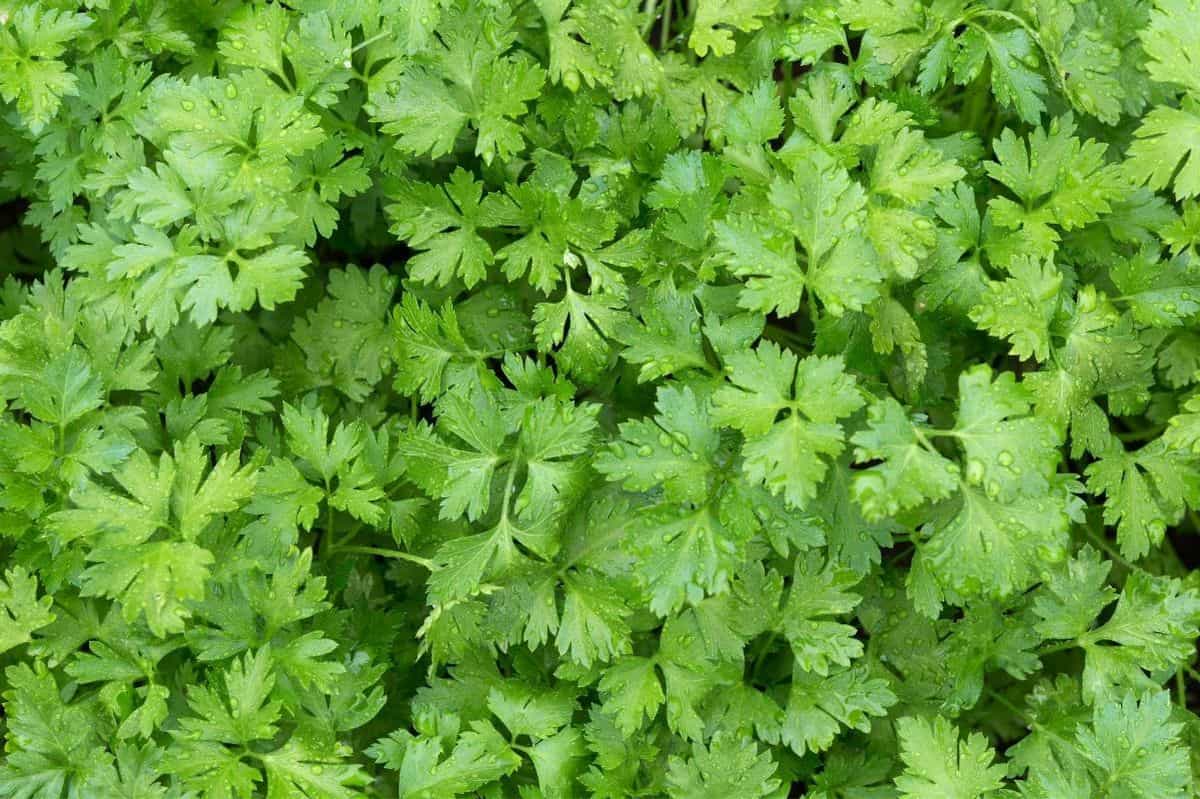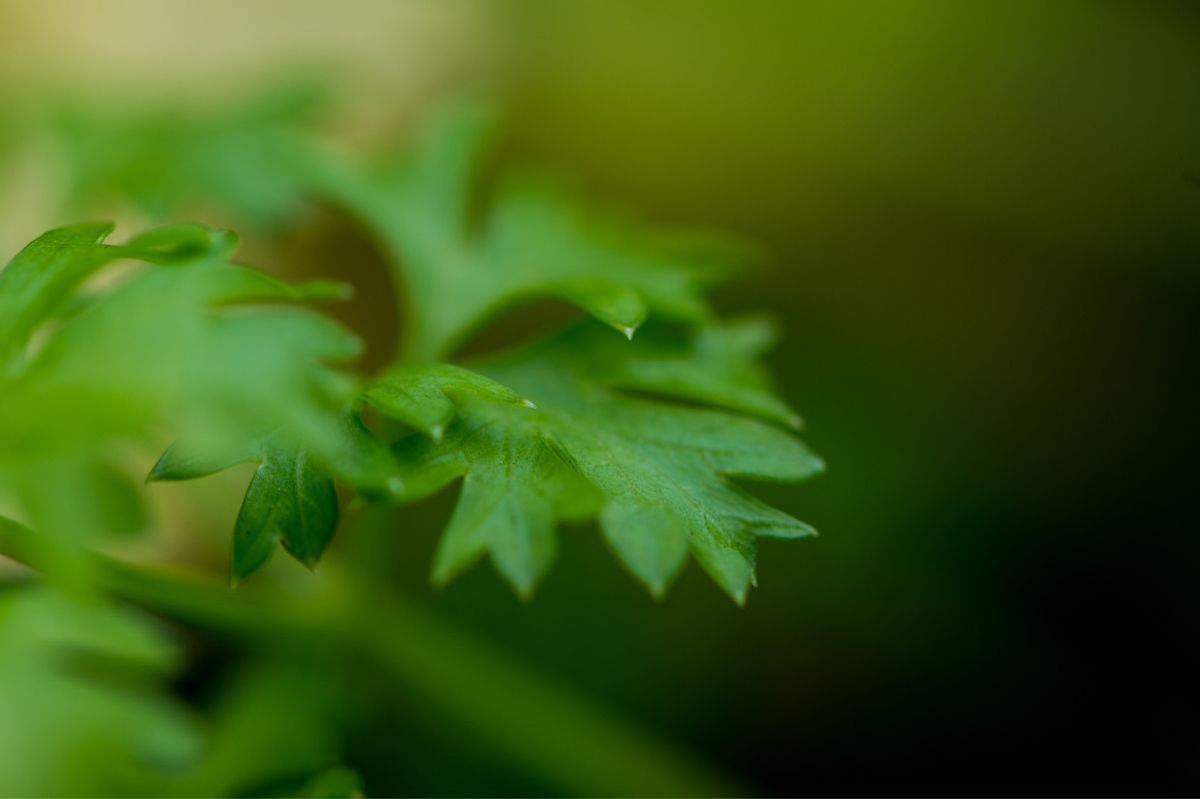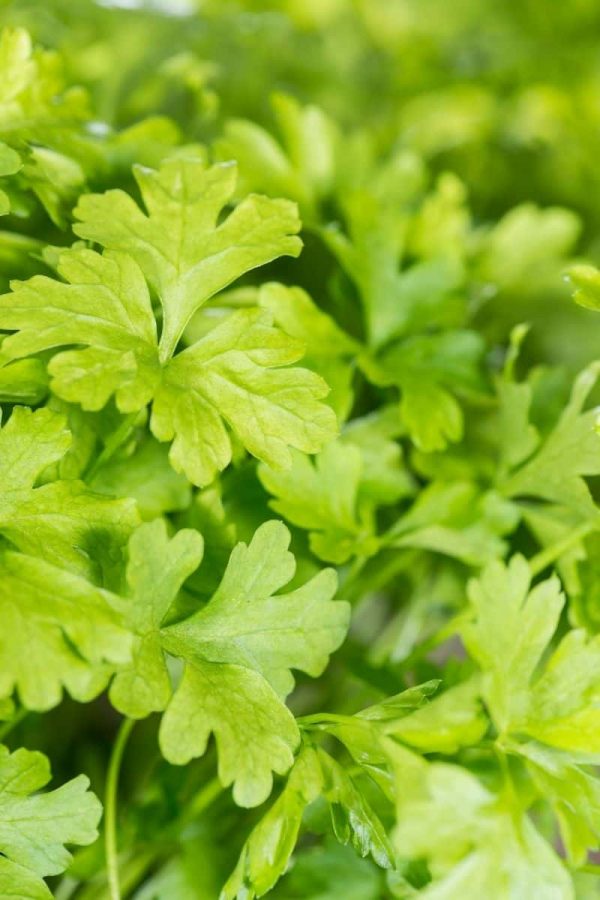Parsley is one of the most versatile herbs you can grow in your garden. Not only is it excellent in a tremendous number of savory soups, salads, pasta dishes, and other recipes, but it’s also a great pollinator host plant for your garden, easy to grow, and super hardy!
We grow parsley to enjoy ourselves, and because it’s a wonderful host plant for swallowtail caterpillars—we love making our garden more friendly to the butterfly population.
And like most herbs, maybe the best part of parsley is the fact that you can harvest again and again and again, and it just keeps growing and growing! Let me show you our exact method for harvesting so you’ll always have fresh parsley on hand.

Table of Contents
How do you know when parsley is ready to harvest?
It’s easy to tell when parsley is ready to harvest—because it’s basically any time! Parsley is a biennial herb that can be harvested when the leaves are large enough to use— and the more often you harvest parsley, the bigger it will grow.
How do you harvest parsley without killing the plant?
Simple—just take what you need each time you harvest. Don’t cut the plant all the way back, and don’t pull the plant—just snip off a stem or two or three, and your plant will keep producing parsley all season long.

Why is my parsley bitter?
Inherently, parsley has a mildly bitter flavor that adds excellent brightness to dishes, but if you find your parsley is too bitter, it might be because you snagged some older leaves. As the older leaves get larger and tend to turn yellow or brown, they sometimes will have a stronger bitter flavor (especially during periods of plant stress—high heat, drought, pest pressure, etc.). Next time, just snip off some of the young, fresh leave for a less bitter experience.

Will parsley grow back after cutting?
If you cut the parsley plant back entirely, it will eventually grow back, but it will take time. Instead, we recommend only cutting what you need at any given time so that the plant continues to be healthy and produce for many weeks.
How often should you harvest parsley?
We generally recommend harvesting only up to 30% of a single parsley plant at a time to promote the most vigorous growth. But we’ve harvested our parsley more heavily than that and been fine, so pinch off stems and leaves as often as you need.
Growfully Protip
If you do a heavy harvest of parsley (half the plant or more), we recommend giving your plant 7-10 days to rejuvenate before going at it again with your snips.

How many times can you harvest parsley?
You can harvest parsley many times throughout the growing season. In most growing zones, parsley has a long growing season, so you can harvest parsley dozens of times in a year!
Growfully Protip
Flat-leaf parsley (AKA: Italian parsley) and curly leaf parsley look slightly different, but the same harvesting rules apply for each type.

Does parsley come back every year?
In moderate and mild climates, parsley can be grown as a full biennial plant (meaning it completes its life cycle in two years). The parsley grows tons of leaves in the first year and stores energy. This first season is the absolute best time to harvest parsley for eating. The parsley plant will send up stalks to flower and then eventually produce seed in the second year. After the seed is produced, the plant will die in the second season.
Growfully Protip
Many people grow parsley as an annual—planting it in their garden in early spring and then pulling the plants in late fall after frost. But we highly recommend letting it go through its entire lifecycle to attract pollinators and other beneficial insects and extend your harvest window!
Here in zone 6B, we plant our parsley in early spring, harvest it all through the summer, fall, and winter, and then let it go to seed the following spring to save parsley seeds for the next year. You’ll need to plant new parsley plants each year since the plants tend to go tough and bitter once they have started to flower and bolt.
Growfully Protip
Parsley is quite hardy. We keep our parsley uncovered in the garden all winter long and enjoy the taste of the fresh herb even in the coldest of months.
Can I eat the stems?
Yep! Some of the older stems will get thicker and woodier, so we recommend setting those aside for stock, but the younger, more tender stems can be chopped up and added to all sorts of dishes where you’d use fresh parsley.

Can you eat bolted parsley?
You can, but just be aware that the stems might be tougher, and the leaves might start to be more bitter. When you harvest parsley that is bolting or flowering, look for young, new leaves, and harvest those first.
How do you use and store parsley?
Parsley adds a fresh flavor to all kinds of dishes from around the globe. Freshly-cut parsley can be wrapped in a damp paper towel or cotton towel and stored in the crisper drawer of your refrigerator to stay fresh. Alternatively, you can put the parsley in a jar of water (like a bouquet!) in the fridge for 7-10 days or on the counter for three days, changing the water daily.

Can I freeze parsley? What about drying?
We recommend freezing parsley rather than drying it, as it loses a lot of flavor during the drying process.
Our favorite way to freeze parsley is to use our handy dandy ice cube trays or specialty herb freezing trays. Use your food processor to mince the parsley leaves and tender stems finely, and then mix it with olive oil. Spoon the parsley into the ice cube tray and freeze until solid, and then pop out the cubes and store in a freezer-safe, airtight container. Then when you’re ready to use, drop a cube or two into your favorite soups, stews, sauces, or other dishes!
Growfully Protip
We don’t dry parsley in our kitchen, but if you’d like to, a regular food dehydrator set to the lowest temperature setting will do the trick quickly.
What are some good parsley recipes?
- Parsley adds a bright, fresh flavor to dishes made from pantry staples, like spaghetti with clams or salmon patties.
- You can really highlight your parsley harvest with this fish in parsley cream sauce recipe.
- Try cooking your herbs into ejjeh, or parsley pancakes.
- Add parsley to all your favorite green salads.
- Parsley is a base ingredient in many Mediterranean dishes. This tabbouleh is a great place to start.
- Once you try chimichurri, you’ll want to put it on everything!
- Parsley is excellent in egg dishes—add it to your next scrambled eggs or omelet!
- This garlic shrimp recipe is finished with a heavy dose of fresh parsley.







